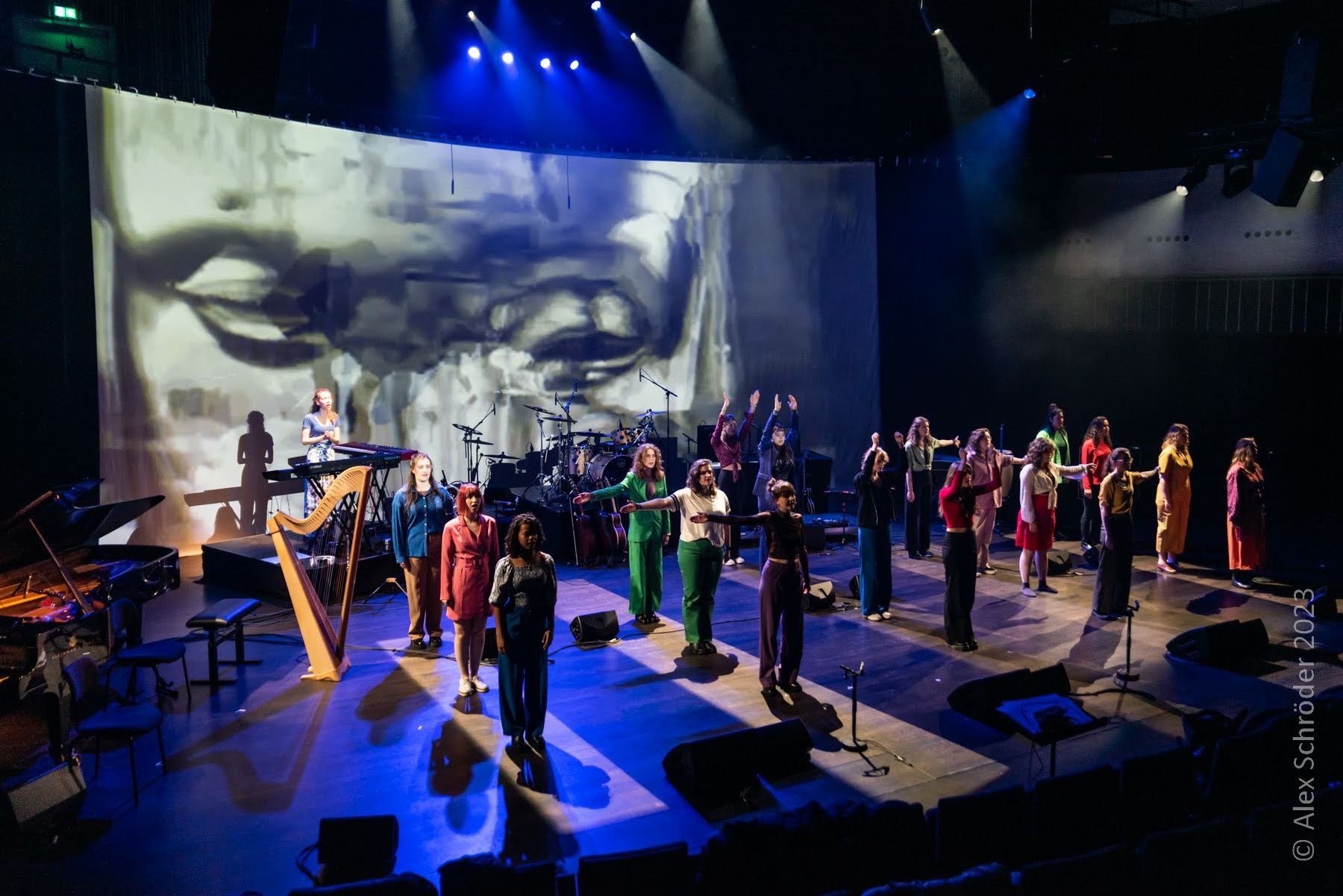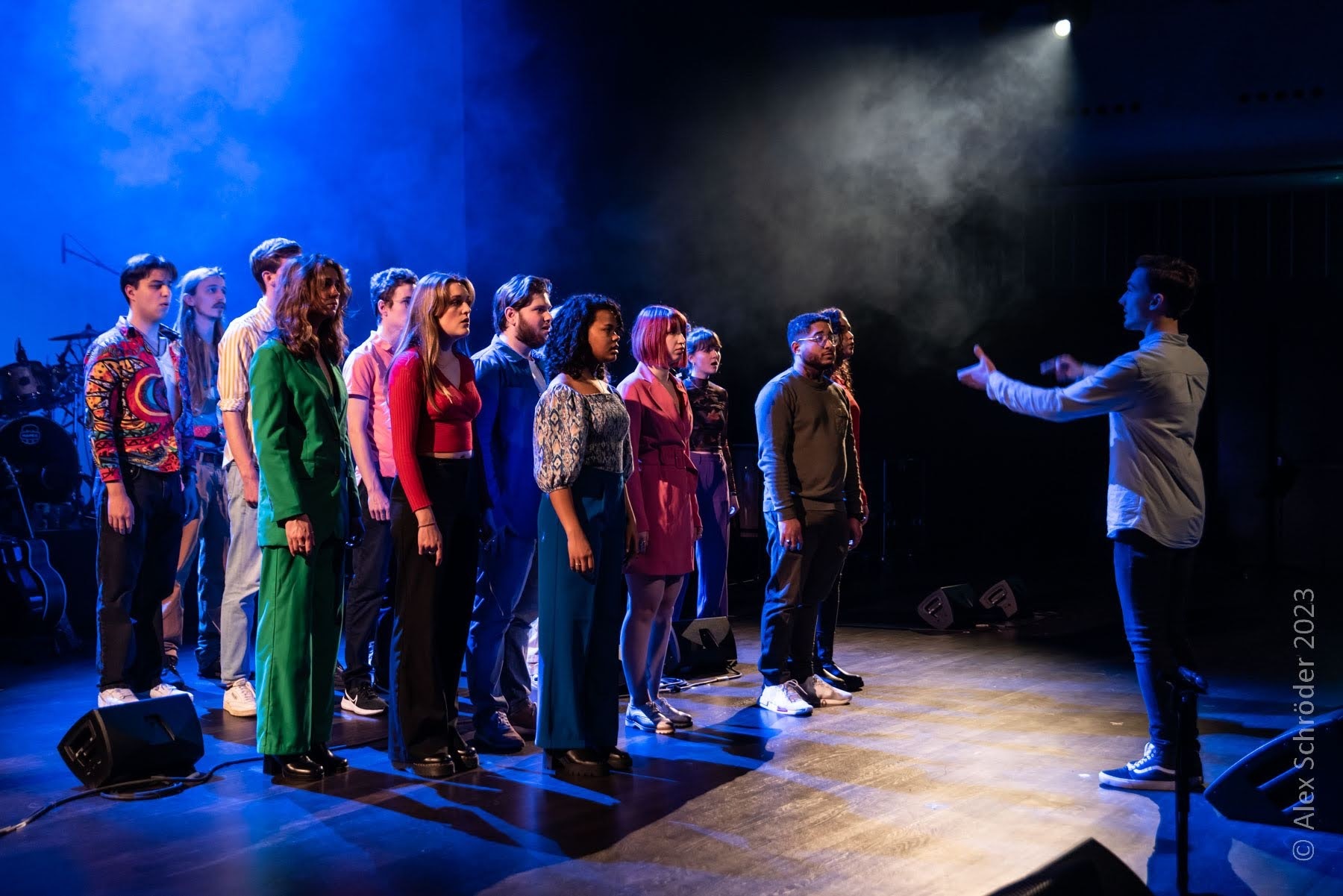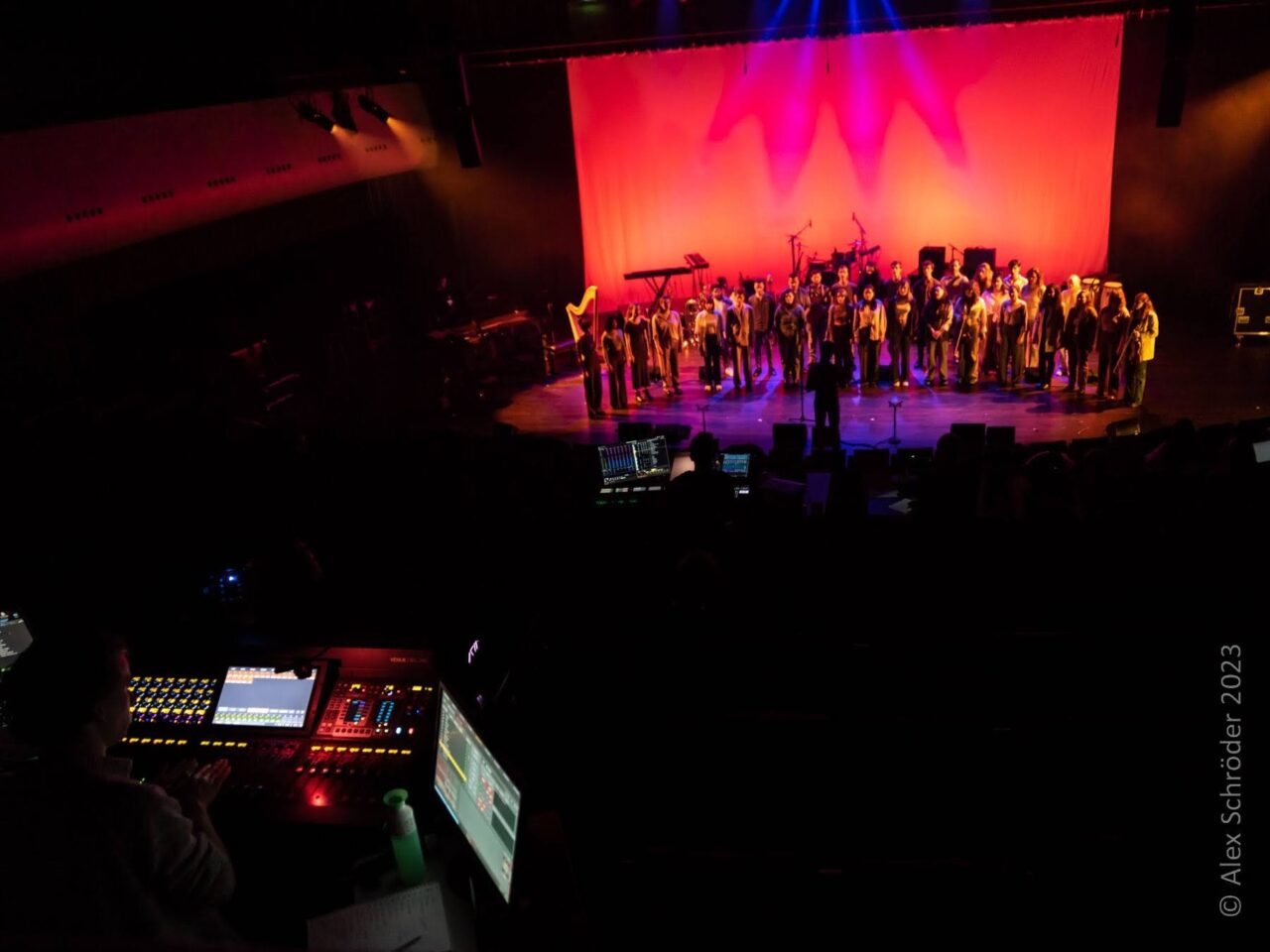This year's theme of The Case was 'Colourful', in contrast to last year's theme 'Concrete'. The director was Pepijn Cladder.
Emiel: 'Nothing was fixed before we started, but the director wanted it to be a creative process of the whole department. So we had a lot of possibilities. We always got three weeks of rehearsal, the first week is really meant to rehearse all the pieces, and later in the year, there are two consecutive weeks where we really put the show together. Each student was asked to suggest a maximum of two pieces, and on the Friday of the first week, we had auditions. We put together a panel of students, two from each year group, and they chose the pieces that would end up in the performance. They made sure that every student got their time to shine. With The Case, once a year we get the chance to show what we're capable of within our course, so we try to make the program as diverse as possible.
Join forces
Emiel: 'This year, for the first time, we've collaborated with students from KABK. We recorded all the pieces and sent them their way. Then we got together and brainstormed how they could add to The Case, for example with decor, lighting, or poster design.
It was really fun to see that there were a lot of new influences and a different way of looking at music. We are mostly concerned with what it sounds like, but they were more focused on the way you look at it. The visual projections they did for our music really added an extra layer to the experience. It was very special.

Simon: 'The Case is also one of the larger projects for the Art of Sound department. Every year we work with a large team of students and everyone has their own role within the production. The first year I was involved I was on the monitors, responsible for the sound that the performers themselves heard. This year I was the project leader, so I was ultimately responsible for everything to do with sound.
Emiel: 'It's very nice that the Art of Sound students are there to help us. You don't really see them on stage, only at the last show they had to come up to take in the applause, but of course, they really deserve it. Without them, we wouldn't have a show. They do a great job and work really hard to give us the best sound possible. We also learn a lot from each other. I myself, as a classically trained musician, do not really think about how something sounds through the speakers and the microphone, so it is very interesting that they have a lot of knowledge about that. Professionalism
Emiel: 'In our department, we're very close to each other, but during The Case week we work together even more intensively. We are working very seriously towards a goal, so you learn how such a rehearsal project works and how to handle it professionally.
We know each other very well, but in The Case, our collaboration is the most concentrated because you really work very hard together for two weeks. We are quite critical of each other, but we also really help each other to get through it.
Simon: "The preparation time for such a big project is actually quite short. We only know what they need from us a short time in advance, so we only have a few weeks to prepare. That means hard work, little sleep, and long days. But it is also a lot of fun to put together such a big production in such a short time. The good atmosphere between the people helps, of course.
We used a division of labor that is quite common among sound engineers. One person is responsible for the sound in the hall, another for the sound for the musicians, and another takes care of all the mics for the singers. This time there was also a person who did the sound recording. We also have 'stagehands', people who help set up and take down, and who help out on stage between shows. As the team leader, I had to design the sound reinforcement in advance. I also consulted with each member of the team about how they would approach the production. I learned a lot from that.
Emiel: 'This was the first time I've been a conductor. I really learned how to lead a rehearsal process and how to work together towards something, with a vision. The piece I conducted, Partita by Caroline Shaw, is a very complicated piece for 16 singers. We worked very hard on it, but we still felt that it was not quite what we wanted. At one point we had a very concentrated, very long rehearsal and it really worked and we ended up performing it very well. I learned a lot from that process, from the moments of doubt that we eventually broke through with a confident performance.
Simon: 'In these kinds of projects we get great support from our teachers. Last year Jeroen Bas was our special couch during The Case, now he has become one of our main subject teachers and he was there to guide us again. Our teacher Jos Diergaarde was also there to help. The head of the Art of Sound department, Paul Jeukendrup, came to see the first performance and gave us some useful tips for the following performances.

Emiel: "The moment just before the performance was always very special for me. We noticed during rehearsals that we didn't always have collective concentration, so we asked Pepijn for a concentration exercise that we could do before every performance. It was very nice to really be together in such a moment.
Simon: 'The best thing was that we improved with every performance. I could see that the quality of the sound amplification was getting better and the performances themselves were getting better with each show. Of course, the atmosphere and working with the Music in Education students was a lot of fun too!
